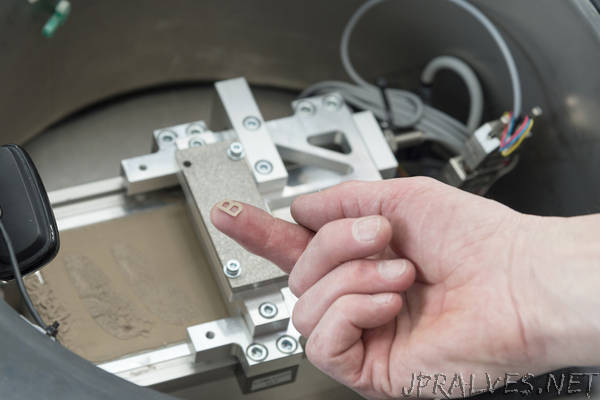
“BAM wants to manufacture tools for the first time under zero gravity conditions using 3D printing. Together with the Clausthal University of Technology (CUT) and the DLR Institute of Composite Structures and Adaptive Systems in Braunschweig, BAM is testing its innovative additive manufacturing process during the 31st parabolic flight campaign of the German Aerospace Center (DLR) from 6th to 8th March. The goal of the experiments is to show that astronauts can manufacture tools or spare parts when needed, even on a space mission.
“Additive manufacturing methods are the future of sustainable production,” said BAM president Prof. Ulrich Panne. “Especially in the aerospace industry, where every kilo counts, enormous costs can be saved if only a printer and powder instead of a complete tool box and components have to be taken on board.”
In the current experiment, metallic powders are used for the first time under zero gravity conditions. These powders can be fused into a finished, ready-to-use component by a laser beam. The challenge, however, is to handle this powder, which is potentially flammable or explosive. The research group has therefore developed a new method that enables metallic powders to be processed under a protective gas atmosphere.
The consortium of BAM, CUT and DLR Braunschweig has developed a new technology for applying the powder, a delicate undertaking in weightlessness. The scientists use a continuous gas flow, which is sucked through the powder layers and thus draws in the particles so stabilising the powder bed without gravity.
“We were able to successfully test our process and produce the first small ceramic components under zero gravity conditions during our first flight of the 30th DLR parabolic flight campaign in August 2017,” explained Prof. Jens Günster, project manager and head of BAM’s Ceramic Processing and Biomaterials division. “Now we want to go one step further and show the potential of our process for additive manufacturing of metallic components during space missions.”
The processes used in the project “Powder-based additive manufacturing in zero gravity” have already been internationally patented. They are based on two patent families that were jointly registered by BAM and CUT within Germany and by BAM alone outside Germany.
Prof. Günster, who is also professor of advanced ceramics at CUT, heads a team that includes Dr. Andrea Zocca, Jörg Lüchtenborg and Gunther Mohr from BAM, Dr. Thomas Mühler from CUT, and Marc Sparenberg from the DLR Institute of Composite Structures and Adaptive Systems in Braunschweig.”
